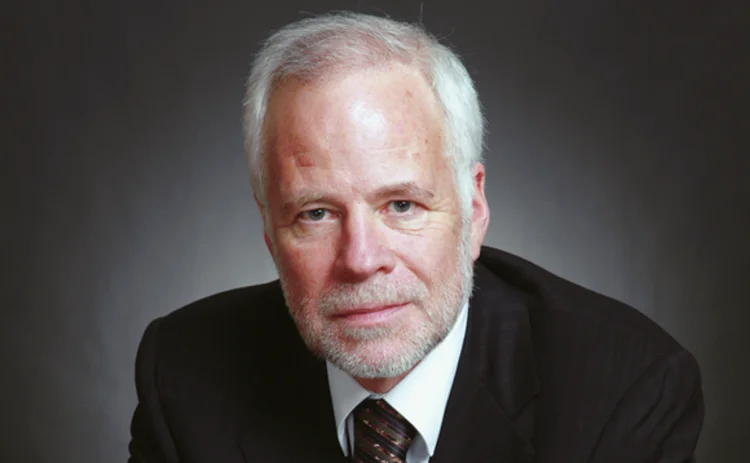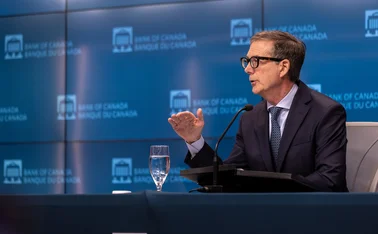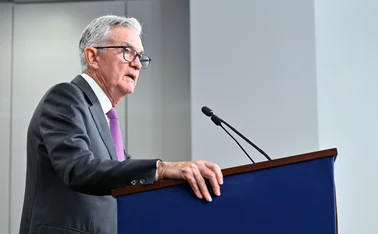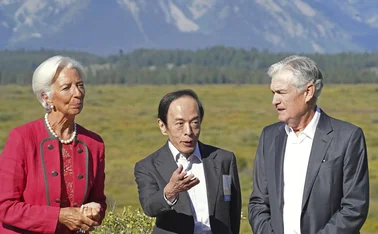
Eichengreen supports calls for FOMC to hold more press conferences
Consistency of form around Fed monetary policy meetings “makes sense”

Leading central bank governance expert, Barry Eichengreen, has offered his support to calls for an increase in the number of press conferences conducted each year after Federal Open Market Committee meetings.
The FOMC, which includes members of the Board of Governors of the Federal Reserve System and presidents of the 12 regional Federal Reserve banks (on a rotating annual basis with the exception of New York, which has a permanent seat), currently meets eight times a year. Press conferences – first introduced by chair Ben Bernanke in 2011 – only take place after every other meeting.
In a Central Banking video interview on transparency, University of California, Berkeley, professor of economics Eichengreen says it “makes sense” to have a uniform structure to FOMC meetings, including a press conference after every meeting.
Federal Reserve Bank of St Louis president James Bullard in a separate interview with Central Banking journal had earlier called for the FOMC to hold a press conference after every meeting. “I feel pretty strongly that all meetings should have a press conference,” Bullard said. “All meetings should be ex-ante identical, and it would give the committee the option to do what it felt it needed to do at a particular juncture – that’s the way monetary policy should operate.”
Bullard added the way the system works at the moment “essentially means we can only make a major decision on four days out of the year” and “that’s very restricting”. It also means the Fed may be forced to make a major decision on a day when the most recent data has not supported that decision. “That causes confusion in the markets, where people ask, ‘Well, why are you doing it, if the data is not supporting you?’”
Eichengreen points out the Fed “ranks pretty high in terms of central bank transparency” according to the studies he carries out with Nergiz Dincer every five years. But consistency of format around FOMC meetings would not “hurt”.
Despite being an advocate for transparency, Eichengreen warned against the Fed speaking out publicly if it disagreed with proposed fiscal policy plans of the US government.
“Central banks should stick to their mandates and stick to their knitting. It is entirely appropriate for the Fed to observe that in its view there is a possibility of a big tax cut fuelling inflation and if it does fuel inflation then the central bank will be compelled to respond by raising interest rates,” says Eichengreen.
“Is it appropriate on the other hand to warn the Congress and the President that big tax cuts are a bad idea? I am not sure if that is the role of central banks,” he adds.
Only users who have a paid subscription or are part of a corporate subscription are able to print or copy content.
To access these options, along with all other subscription benefits, please contact info@centralbanking.com or view our subscription options here: subscriptions.centralbanking.com/subscribe
You are currently unable to print this content. Please contact info@centralbanking.com to find out more.
You are currently unable to copy this content. Please contact info@centralbanking.com to find out more.
Copyright Infopro Digital Limited. All rights reserved.
As outlined in our terms and conditions, https://www.infopro-digital.com/terms-and-conditions/subscriptions/ (point 2.4), printing is limited to a single copy.
If you would like to purchase additional rights please email info@centralbanking.com test test test
Copyright Infopro Digital Limited. All rights reserved.
You may share this content using our article tools. As outlined in our terms and conditions, https://www.infopro-digital.com/terms-and-conditions/subscriptions/ (clause 2.4), an Authorised User may only make one copy of the materials for their own personal use. You must also comply with the restrictions in clause 2.5.
If you would like to purchase additional rights please email info@centralbanking.com test test test








